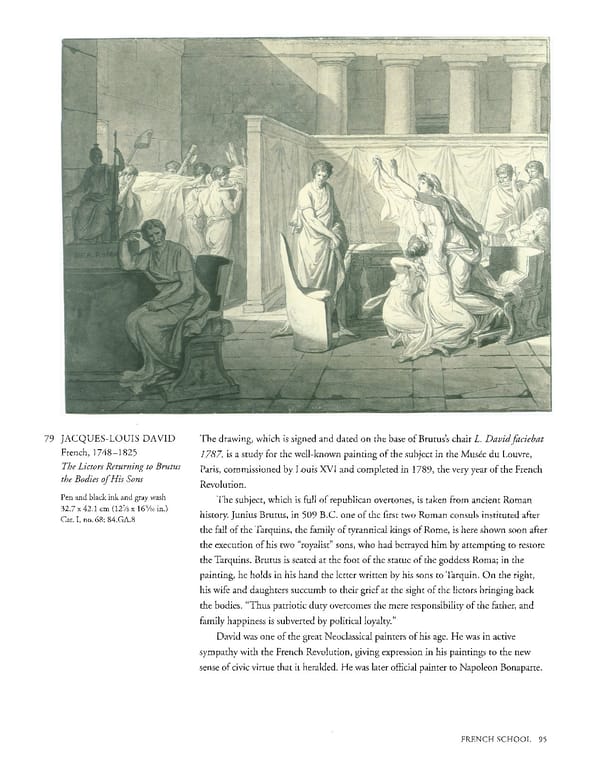79 JACQUESLOUIS DAVID The drawing, which is signed and dated on the base of Brutus's chair L. David faciebat French, 17481825 1787, is a study for the wellknown painting of the subject in the Musee du Louvre, The Lictors Returning to Brutus Paris, commissioned by Louis XVI and completed in 1789, the very year of the French the Bodies of His Sons Revolution. Pen and black ink and gray wash The subject, which is full of republican overtones, is taken from ancient Roman 32.7 x 42.1 cm (12 x 16 9/16 in.) Cat. I, no. 68; 84.GA.8 history. Junius Brutus, in 509 B.C. one of the first two Roman consuls instituted after the fall of the Tarquins, the family of tyrannical kings of Rome, is here shown soon after the execution of his two "royalist" sons, who had betrayed him by attempting to restore the Tarquins. Brutus is seated at the foot of the statue of the goddess Roma; in the painting, he holds in his hand the letter written by his sons to Tarquin. On the right, his wife and daughters succumb to their grief at the sight of the lictors bringing back the bodies. "Thus patriotic duty overcomes the mere responsibility of the father, and family happiness is subverted by political loyalty." David was one of the great Neoclassical painters of his age. He was in active sympathy with the French Revolution, giving expression in his paintings to the new sense of civic virtue that it heralded. He was later official painter to Napoleon Bonaparte. FRENCH SCHOOL 95
 Masterpieces of the Getty Museum: Drawings Page 95 Page 97
Masterpieces of the Getty Museum: Drawings Page 95 Page 97